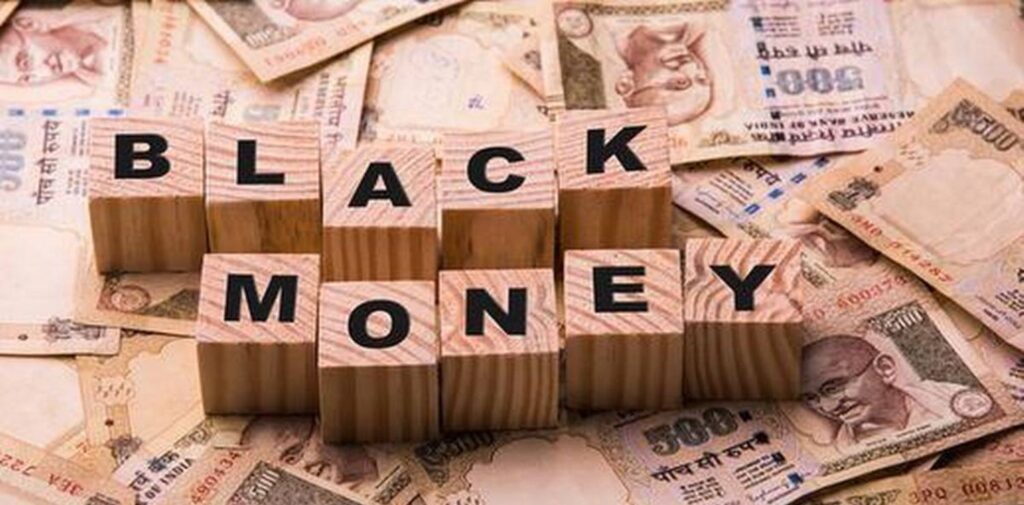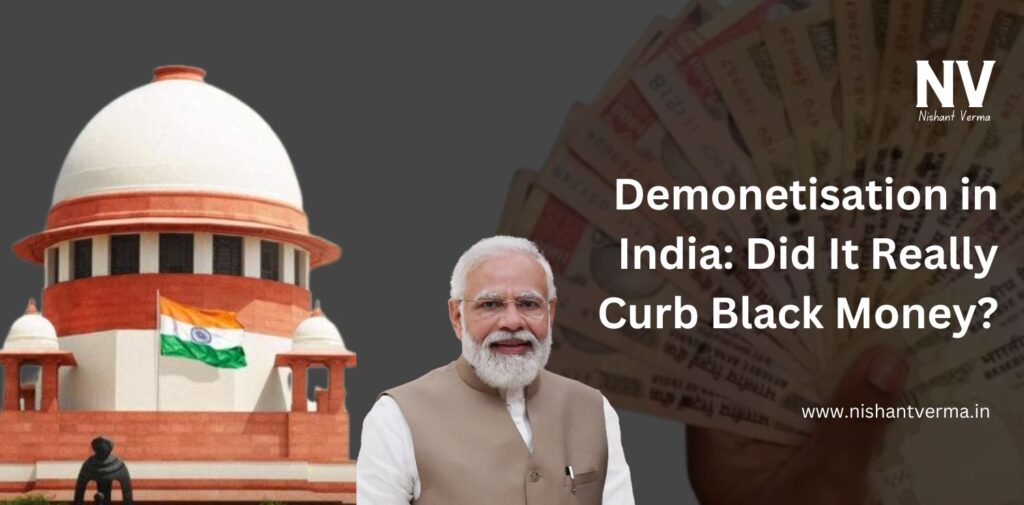Demonetisation has been one of the most controversial economic measures undertaken in India’s recent history. In November 2016, Prime Minister Narendra Modi announced that ₹500 and ₹1000 notes, a move aimed at curbing black money, counterfeit currency, and reducing cash in circulation. At that time, the total cash in circulation was approximately ₹16 lakh crore. Fast forward to today, the amount of cash in circulation has more than doubled to ₹35 lakh crore. While the Reserve Bank of India (RBI) claims that 97% of ₹2000 notes have returned to the system, Indians are making 10-12 billion cashless transactions every month. This raises a critical question: Did demonetisation serve its intended purpose?
The Objectives of Demonetisation
Demonetisation was rolled out with lofty goals. The primary objectives of the policy, as outlined by the government, were:
Curbing Black Money: Large amounts of unaccounted money, or “black money,” were believed to be hoarded in high-denomination currency notes. The expectation was that individuals holding unaccounted wealth would be forced to deposit their cash in banks, allowing the government to track suspicious transactions.
Eliminating Fake Currency: Counterfeit currency was seen as a threat to the economy, especially in its role in financing illegal activities and terrorism. it was intended to weed out such fake notes from the economy.

Promoting Digital Transactions: The government hoped to move the economy towards less reliance on cash by encouraging digital and cashless transactions.
Reducing Cash in Circulation: There was a notion that excessive cash in circulation contributed to tax evasion and black-market activities. By invalidating a significant portion of the currency, the government aimed to shrink the informal economy.
Cash in Circulation: A Startling Surge
In 2016, the total cash in circulation was ₹16 lakh crore. Post-demonetisation, as the economy adjusted to the withdrawal of ₹500 and ₹1000 notes, there was a sharp reduction in the availability of cash for a brief period. However, as of 2023, the cash in circulation has more than doubled, reaching an astounding ₹35 lakh crore.
This surge in cash contradicts the assumption that it would lead to a reduction in cash dependency. While digital payments have seen a significant rise, the massive increase in currency usage suggests that cash continues to be a preferred mode of transaction in large sections of the economy. The expectation that it would push India towards becoming a “less-cash” economy seems to have faltered, especially given that informal sectors and rural India still rely heavily on cash transactions.
Black Money: A Mirage or a Reality?
A key argument for demonetisation was its potential to unearth black money. However, after this, it was revealed by the RBI that about 99.3% of the demonetised notes were returned to banks. This meant that nearly all of the money in circulation was accounted for, raising serious doubts about the amount of money that it could effectively capture.

The anticipated “windfall” from unreturned currency, which the government hoped to use for developmental projects, never materialized. In fact, most of the so-called black money was either already in the banking system or found its way back through various channels like Jan Dhan accounts or cooperative banks.
While the government did collect a significant amount in tax revenue from those who deposited large sums in banks, this exercise did not lead to a significant drop in the accumulation of unaccounted wealth. Instead, many argue that those with substantial black money simply converted their assets into real estate, gold, or foreign currency, bypassing the intended goals.
Digital Payments: A Silver Lining
One area where demonetisation did seem to have a positive impact was in boosting digital transactions. With cash in short supply in the immediate aftermath of the move, both individuals and businesses were forced to adopt digital modes of payment. Over the years, UPI (Unified Payments Interface), mobile wallets, and online banking have flourished. India now witnesses 10-12 billion cashless payments per month, a testament to the growing acceptance of digital payment systems.

This shift is not insignificant. The rise in cashless transactions has certainly reduced the reliance on cash in certain sectors, especially in urban India. The digital payments ecosystem has grown rapidly, with UPI leading the charge, and initiatives like the government’s “Digital India” campaign have further accelerated this trend. The convenience and accessibility of mobile banking and payment apps have transformed how many people, particularly in urban areas, conduct their daily transactions.
However, this digital revolution has its limitations. While urban India may be embracing cashless transactions, rural areas and the informal economy are still heavily reliant on cash. A significant portion of India’s population, especially those in rural regions, lack access to the internet and smartphones, making it difficult for them to adopt digital modes of payment.
Counterfeit Currency: Minimal Impact
Another major justification was the eradication of counterfeit currency, which was believed to be funding terrorism and other illegal activities. While the move temporarily disrupted the circulation of fake notes, there is little evidence to suggest that it had a lasting impact in eliminating counterfeit currency.
In fact, reports from the RBI suggest that counterfeit currency continues to resurface. Moreover, newer and more sophisticated techniques for producing fake currency have emerged, meaning that the demonetisation exercise may have offered only a temporary relief in this regard. The initial shock may have disrupted some illegal activities, but it did not provide a long-term solution to the problem.
Conclusion: Did Demonetisation Achieve Its Purpose?
In hindsight, it appears to have fallen short of its original objectives. While digital transactions have seen a significant rise and continue to grow, cash usage remains prevalent in the Indian economy. The increase in cash circulation from ₹16 lakh crore to ₹35 lakh crore is a stark indication that the Indian economy has not transitioned towards becoming “cashless” as envisaged.
Moreover, the effort to curb black money through this largely failed, as almost all the demonetised currency returned to the system. The expected bounty of unreturned money did not materialize, and black money continues to exist, albeit in different forms.
Counterfeit currency remains an issue, albeit with more sophisticated methods of forgery. The temporary disruption in the economy did little to provide a permanent solution to counterfeit notes.
In conclusion, while this succeed in pushing the adoption of digital payments, its broader goals of curbing black money, reducing cash dependency, and eliminating fake currency were not fully realized. The Indian economy, with its complex informal sector and deep-rooted reliance on cash, continues to present challenges to any drastic measures aimed at overhauling it.




